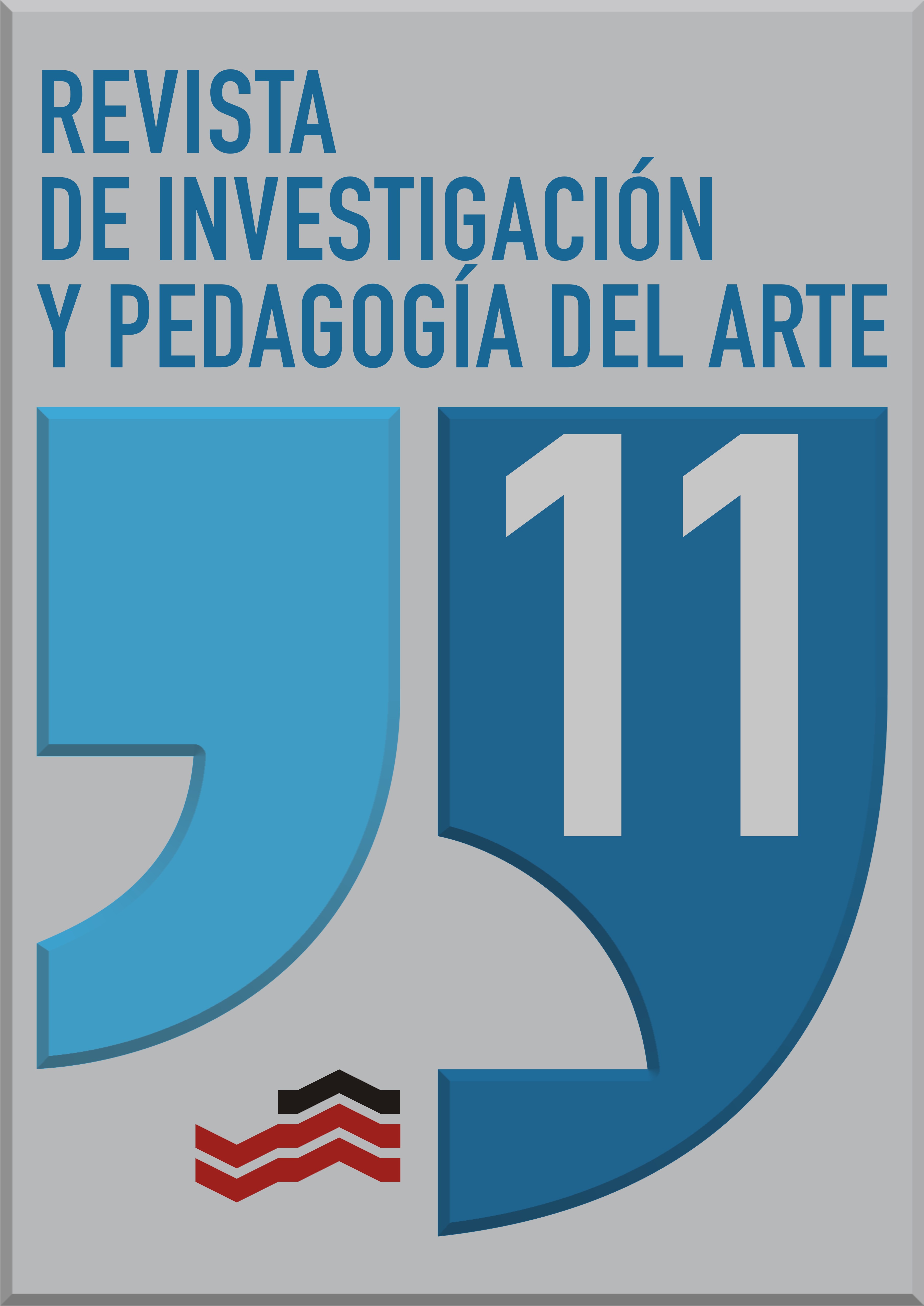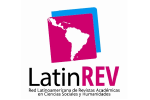Challenges, resources and student´s level of commitment in the ear-training class. An approximation to its study
DOI:
https://doi.org/10.18537/ripa.11.06Keywords:
solfege, ear-training, technical-musical skills, computer assisted learningAbstract
This article presents the results of a study whose purpose was to determine the degree of students´s commitment in a Bachelor of Music degree in central Mexico, towards their ear-training classes; characterize the subject`s technical competencies whose mastery represent greater difficulty for them; and identify the resources they use to improve in their performance. The research method was quantitative, exploratory-descriptive. 38 students enrolled in this subject (90.47 % of the total population) answered a questionnaire that was sent through Google Forms. Results indicate the level of students` commitment is adequate. With regard to the competences, melodic dictation was considered the most difficult one, followed by harmonic dictation, intonation and musical reading. Regarding the resources students used to help themselves, it was observed that digital resources, such as computer-assisted learning programs, were very seldom used. The article concludes with some pedagogical strategies that could be useful for students to improve in their classes.
Downloads
References
ANUIES. (1972). Acuerdos de Tepic. Asociación Nacional de Universidades e Institutos de Enseñanza Superior. Recuperado de http://publicaciones.anuies.mx/revista/4/2/2/es/acuerdos-de-tepic-asociacion-nacional-de-universidades-e-institutos
Arango, K. L. (18-20 julio de 2018). Entrenamiento auditivo en el aula: acciones educativas con uso de TIC. Congreso Internacional de Educación y Aprendizaje. Congreso llevado a cabo en la Université Paris Diderot. Paris, France. https://conferences.eagora.org/index.php/educacion-y-aprendizaje/2018/paper/view/6106
Bandura, A. (1977). Self-efficacy: Toward a unifying theory of behavioral change. Psychological Review, 84(2), 191-215. https://psycnet.apa.org/doi/10.1037/0033-295X.84.2.191
Blix, H. S. (2014). Learning strategies in ear training. En I. E. Reitan, A. K. Bergby, V. C. Jakhelln, G. Shetelig e I. F. Øye (Eds.), Aural perspectives. On musical learning and practice in higher music education (págs. 97-115). NMH-publikasjoner. https://nmh.brage.unit.no/nmh-xmlui/handle/11250/274211
Capistrán Gracia, R.W. Islas Ávila, S. (2017). El piano complementario en la Licenciatura en Música de la UAA: Estudio de caso. Praxis Investigativa ReDIE, 9(17), 61-78. ISSN: 2007-5111. https://dialnet.unirioja.es/servlet/articulo?codigo=6560024
Carrillo, M., Padilla, J., Rosero, T. y Villagómez, M. S. (2009). La motivación y el aprendizaje. Alteridad. Revista de Educación, 4(2), 20-32. https://dialnet.unirioja.es/servlet/articulo?codigo=5981136
Colorado Farfán, J. R. (2019). Propuesta de material didáctico de solfeo a cuatro voces para Gramática Musical I en la Universidad Pedagógica Nacional. [Trabajo de grado inédito]. Universidad Pedagógica Nacional. http://repository.pedagogica.edu.co/handle/20.500.12209/10436
Condaris, Ch. (2019). Correlating Methods of Teaching Aural Skills with Individual Learning Styles. Athens Journal of Humanities & Arts, 6, 1-14. https://doi:10.30958/ajha.6-1-1
Corrales Sánchez, O. y Jiménez Carrillo, M. A. (1994). El Docente como Investigador. Revista Educación, 18(2), 73-39. http://doi:10.15517/revedu.v18i2.12684
Fournier, G., Moreno Sala, M. T., Dubé, F., & O’Neill, S. (2019). Cognitive strategies in sight-singing: The development of an inventory for aural skills pedagogy. Psychology of Music, 47(2), 270-283. https://doi.org/10.1177/0305735617745149
Hallam, S. (2001). The development of metacognition in musicians: Implications for education. British Journal of Music Education, 18(1), 27-39. https://doi:10.1017/S0265051701000122
Herbst A. C. (1993). (Disertación Doctoral). Facultad de Artes. Universidad de Stellenbosch.
Holguín-Tovar, P. J. (2010). Concepciones sobre educación auditiva y solfeo: el ser y el deber ser en la formación profesional. En Actas I Jornadas de Música Universidad Nacional de Rosario. Escuela de Música; Universidad Nacional de Rosario, Rosario. https://www.aacademica.org/pilar.jovanna.holguin.tovar/4
Jorgensen, H. (2004). Strategies for individual practice. En Williamon, A. (Ed.), Musical Excellence: Strategies and Techniques to Enhance Performance (págs. 85-104). Oxford University Press.
Kariuki, P. N. y Ross, Z. R. (8-10 noviembre de 2017). The effects of computerized and traditional ear training programs on aural skills of elementary students. Annual Conference of the Mid-South Educational Research Association. Starkville, Mississippi.
Kiraly, Z. (2003). Solfeggio 1: A Vertical Ear Training Instruction Assisted by the Computer. International Journal of Music Education, os-40(1), 41-58. https://doi.org/10.1177/025576140304000105
Lasso Chaves, D. R. (2019). Monitor tecnológico para el estudio del solfeo (Trabajo de grado). Universidad del Rosario. Escuela Colombiana de Ingeniería Julio Garavito. https://repository.urosario.edu.co/handle/10336/24433
Lozano-Beltrán, P. D. y Hernández-Guayara, A. (2011). Factores didácticos que inciden en la educación auditiva de los estudiantes de tercer semestre del Programa Maestro en Música del Conservatorio del Tolima. (Tesis de Maestría) Universidad de La Salle, Bogotá. https://ciencia.lasalle.edu.co/maest_docencia/602
Nart, S. (2016). Music software in the technology integrated music education. The Turkish Online Journal of Educational Technology, 15(2), 78-84. www.tojet.net/articles/v15i2/1529.pdf
Nielsen, S. (2001). Self-regulating learning strategies in instrumental music practice. Music Education Research, 3(2), 155-167. https://doi.org/10.1080/14613800120089223
Ramírez Montoya, M. S. (2008). Dispositivos de mobile learning para ambientes virtuales: implicaciones en el diseño y la enseñanza. Apertura, 8(9), 82-96. https://www.redalyc.org/articulo.oa?id=68811230006
Salas, J. (2018). Estrategias de aprendizaje en el estudio del solfeo entonado en el curso de lenguaje y percepción musical. Investigación y Postgrado, 33(1), 131-151. https://dialnet.unirioja.es/servlet/articulo?codigo=6736269
Sarango Camacho, F. B. (2015). Propuesta metodológica para la asignatura de solfeo utilizando el material musical de compositores lojanos. Educación, Arte y Comunicación, 4, 28-37. https://revistas.unl.edu.ec/index.php/eac/article/view/292
Zimmerman, B. J. (2008). Investigating self-regulation and motivation: Historical background, methodological developments, and future prospects. American Educational Research Journal, 45(1), 166-183. https://doi.org/10.3102/0002831207312909
Martínez, G y Ramírez, R. (2006). El entrenamiento auditivo interactivo. Revista Digital Universitaria, 7(2), 2-8. http://www.revista.unam.mx/vol.7/num2/art12/feb_art12.pdf
Martínez, G. (2002). Aplicación de un método programado para tomar dictados tonales rítmico-melódicos-armónicos. http://www.ejournal.unam.mx/cem/vol02-04/cem0401.pdf
Published
Issue
Section
License

This work is licensed under a Creative Commons Attribution-NonCommercial-ShareAlike 4.0 International License.










